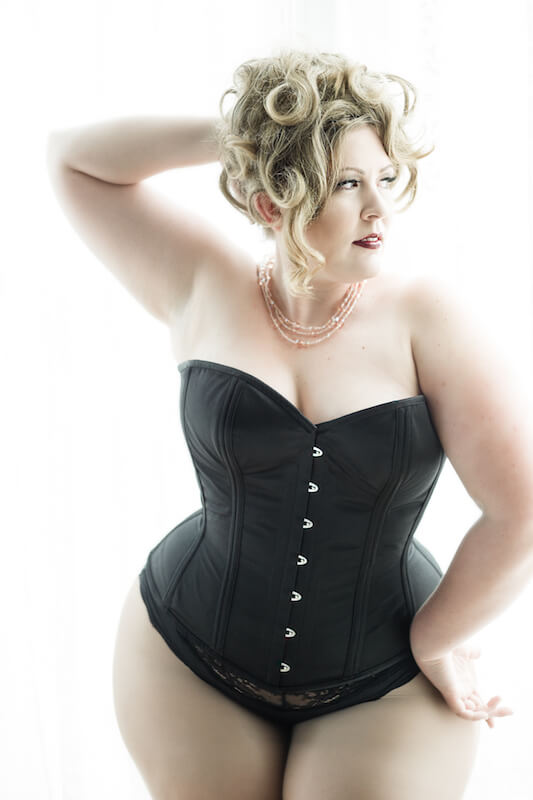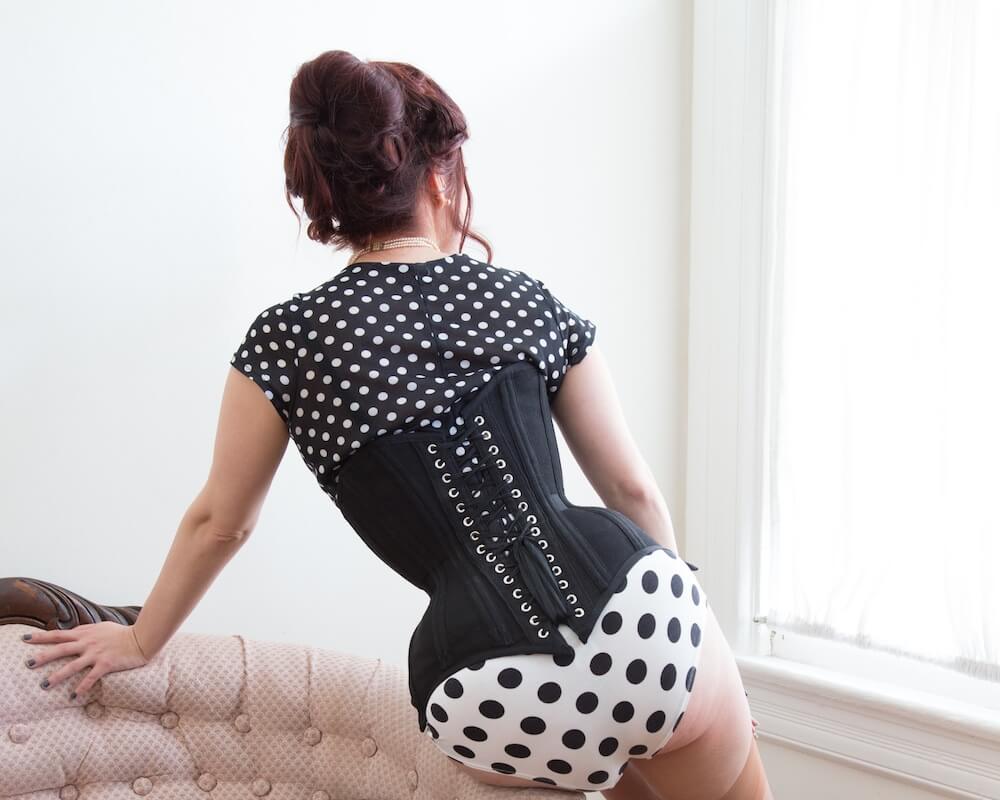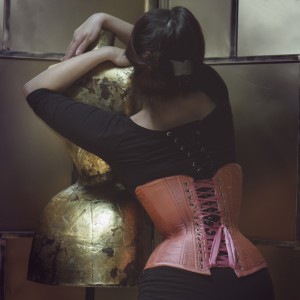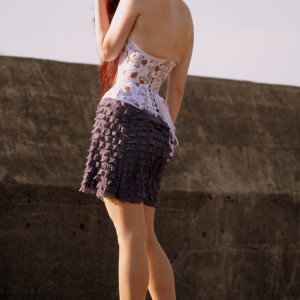3 Most Common Corset Lacing Mistakes
Part three in the corset lacing series will discuss the most common mistakes made in lacing the corset onto the body. Part 1 covered the structure and hardware, Part 2 explained the back gap. As I mentioned in my original introduction, fit and comfort are deeply tied into how your corset is laced, but did you know that how you tie yourself up can also make an appreciable difference in the lifespan of your corset?
Mistake #1: Corsets not worn on the anatomical waistline
Wearing your corsets properly adjusted on your waistline can make a huge impact on how they feel. Your apparent natural waist is often higher than your skeletal waist. Furthermore, corsets sometimes have a tendency to creep upwards during the lacing process, which compounds the problem. To keep the corset anchored in place while someone else laces you in, hold the bottom of your corset firmly with both hands. (Note that lacing should always be pulled out to the sides, never straight back towards the lacer - whether the laces then angle up or down is a matter of your personal taste.) If you find that, once already laced, your corset seems to be riding high, grasp the bottom of the corset, and inhale deeply high in your lungs to lift your rib cage upwards. I often adjust my corsets slightly throughout the day to correspond with the subtle shift of both my organs and the corset itself, pulling the whole corset down or occasionally shifting the front waist up.
On a fleshier body, it may be hard to tell where the waistline sits and there may indeed be a lot of wiggle room with where the corset can be placed, as the reduction is dispersed into fleshy tissue, putting less pressure on the bones and organs of the torso. You can use the fit of the bust, back, and hips as a guide for placing the corset vertically if your natural waist is hard to find. Some may find that their corsets are more comfortable when situated higher on the waist (shortening their waist to underbust measurement), so just play around until you find the spot that's most comfortable for you.

Notice how the hips expand when seated | Pop Antique "Vamp" corset | Model: Victoria Dagger | Photo: Karolina Marek
Mistake #2: Corsets laced too tight at the hips
This is an issue I see most often in tightlacers, and it's a tricky one. Though some appreciate or even need the additional compression at the hips, your hips actually need a surprising amount of room to expand when you walk and sit and so forth. However, just as a corset laced too tight at the bust will create the quad-boob effect, or too tight at the waist or ribs will be uncomfortable, a corset that is too tight at the hips can actually damage the corset. None of these is desirable, but the last is hardest to spot from inside the corset. Even though a corset is expected to be tight and constricting, it's important to leave a bit of wearing ease at your hips. A corset that has no ease when you are standing strains its hardware and fabric to accommodate a sudden increase in your hip measurement when you sit down. The bones that frame the grommets have nowhere to distribute the additional pressure and instead crumple, kinking the steel and cracking its protective coating. For those who appreciate or even need the additional compression at the hips, talk to your corsetiere about perhaps an expanding hip gusset or extra-sturdy boning and other reinforcements around the grommets.
Personally, I like to be able to get the flat of my (admittedly tiny) hand into the bottom edge of my corset. Having just measured it, my hips expand more than a full inch when I go from standing to seated. Not only do I like a high range of mobility in my personal corsets, I also prefer the look of slightly looser hips: it creates a more dramatic hourglass, and when I sit down, I don't end up with a little "corset muffin."
Mistake #3: Laces tied around waistline
This mistake is particularly common with corset neophytes - it feels so natural! And in truth, I have seen experienced corsetieres and corset wearers do this as well, presumably intentionally for personal reasons. The main problem is that the lacing will chafe the outer fabric of your corset -- you're just creating additional friction for both the lacing and the body of the corset. Brocades and embroidery won't last as long when subjected to this sort of abrasion. As a lesser concern, tying the laces around the waist actually breaks up the silhouette and adds a bit of bulk, so it's particularly not recommended for those who are drawn to a tightlaced aesthetic. To keep your laces out of the way, try tucking them into the bottom of your corset. With that wearing ease for your hips, there should be a comfortable amount of room for them in there. If you want to draw attention to your waistline, talk to your corsetiere about stitched in ribbon detail or other waistline accent.
As you can see, there are exceptions for each of these lacing mistakes! Like anything, though, it's always a good idea to know the rules before you break them. Lace safely, everyone!











